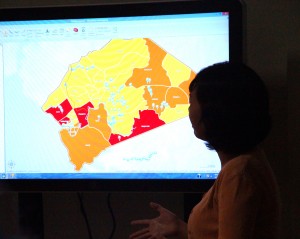
The Kapit-Bisig Laban sa Kahirapan-Comprehensive and Integrated Delivery of Social Services (Kalahi-CIDSS) of the Department of Social Welfare and Development (DSWD) recently held a soft launch of its Project Information Management System (PIMS) in Quezon City.
The PIMS will serve as a database system for the project staff, from the national to the regional levels, to upload, access, and analyze data.
Aside from data storage, the system can also be used for map production, geo-tagging application, and spatial analysis. It also has web and Short Message Service (SMS) applications.
According to DSWD Secretary Corazon Juliano-Soliman, PIMS will help make project implementation more efficient, as the information is now integrated for all units at different levels – from the national down to the barangay.
Through Kalahi-CIDSS, the poorest villages in the country are able to identify their primary needs and implement projects that respond to their problems. These include school buildings, day care centers, and livelihood trainings, among others.
The geo-tagging feature of PIMS can be used by the staff to tag the location of the small infrastructure projects. The progress of the projects currently being constructed can also be followed using this system.
This feature of PIMS, according to Sec. Soliman, will help ensure transparency.
She said, “The PIMS helps ensure the integrity of the project by making the data transparent at all levels. Since more eyes will now be looking into the progress of the projects the possibility of committing fraud is minimized even more”.
She added that through PIMS, Kalahi-CIDSS implementers will now be able to better track the progress of the projects, allowing them to better respond to issues and concerns that may be flagged by any of the staff.
Kalahi-CIDSS is one of the main poverty alleviation programs of the DSWD, along with the Pantawid Pamilyang Pilipino Program and the Sustainable Livelihood Program.
It utilizes the community-driven development (CDD) strategy to develop the capacities of residents and local government units of the poorest municipalities in the country so they will be able to lift their communities from poverty.
After 10 years of CDD implementation, Kalahi-CIDSS is now preparing to scale up its operations into the National Community-Driven Development Program (NCDDP), which will cover more municipalities all over the Philippines.
The NCDDP will be implemented by DSWD along with other national government agencies. ###


